Tatlin—new art for a new world, at the Museum Tinguely, Basel, Switzerland, June 6-October 14, 2012. Catalogue published by Hatje Cantz Verlag, Ostfildern, 2012
This is the first in a series of six articles on the current exhibition, Tatlin—new art for a new world, at the Museum Tinguely in Basel, Switzerland.
The Museum Tinguely in Basel, Switzerland is currently holding an exhibition dedicated to the works of Vladimir Tatlin (1885-1953), one of the most important artists of the Russian and Soviet avant-garde, famed especially for his extraordinary monument to the Third (Communist) International. Tatlin—new art for a new world will run until October 14.
More than a hundred works of art are on display in Basel, among them early paintings, large counter-reliefs [1], two reconstructions of Tatlin’s models for his legendary monument and his elegant flight apparatus, “Letatlin” [2], as well as stage designs, costumes for theatrical performances and two of his later paintings.
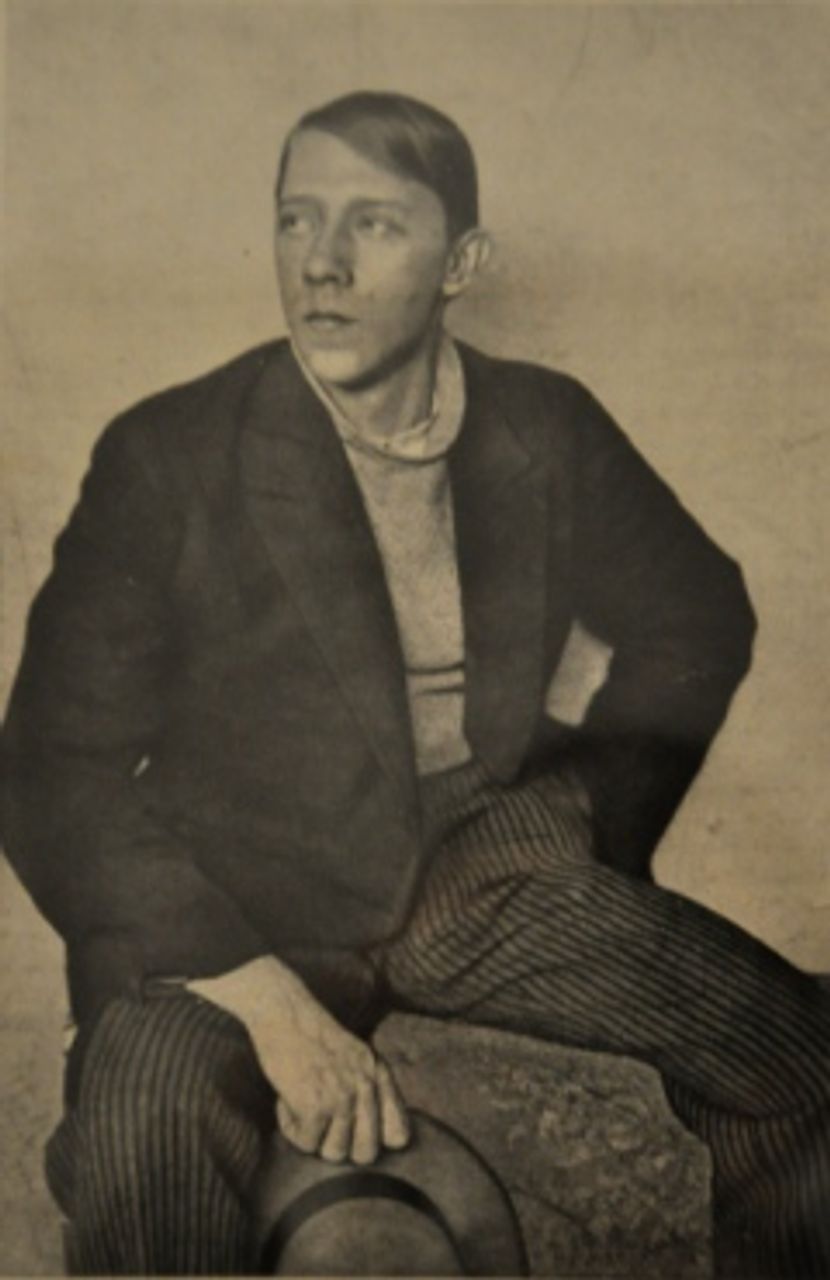 Unknown photographer, Vladimir Tatlin,
Unknown photographer, Vladimir Tatlin, 1911, RGALI Russian State Archive of
Literature and Art, Moscow
“We wanted to show all of Tatlin”, Roland Wetzel, director of the Museum Tinguely explains in his introduction. No comprehensive exhibition has been dedicated to this great artist for almost twenty years. Later artists such as Swiss painter and sculptor Jean Tinguely (1925-91) looked upon Tatlin as an inspiration. Tinguely, whose art the Basel museum is dedicated to, also regarded himself as someone “pledged to an art which was socially engaged”.
The central hall of the Museum Tinguely is the show’s centrepiece. Two reconstructions of Tatlin’s monument to the Third International have been placed in this space, and attached to the ceiling is his Letatlin, as if it were flying among the towers. Grouped around the towers on the walls are the paintings that made his reputation before 1914 as an avant-garde artist, along with three of his famous sculptures, known as “counter reliefs”. Two of his later, realistic paintings—with their memento-mori motifs—belong to the period when Tatlin went into internal exile to escape the bureaucratic dictates of Stalinist “socialist realism”.
This generously arranged space, whose art works can also be viewed from the outside through the windows, shows the revolutionary artist in all his complexity and visionary creativity.
The large hall leads off into smaller rooms with reconstructions of his “counter-reliefs” as well as drawings, photos and documents. A movie theatre shows a fifty-minute film produced by Russian state television that was revised for the exhibition. The exhibition ends in the basement with a presentation of Tatlin’s works for theatre, a sphere he dealt with during his entire life as an artist, as well as his clothing designs. The explanations accompanying the various works and commenting on his creative efforts are concise, and allow visitors with little knowledge of the Russian and Soviet avant-garde or the times in which Tatlin lived to orient themselves.
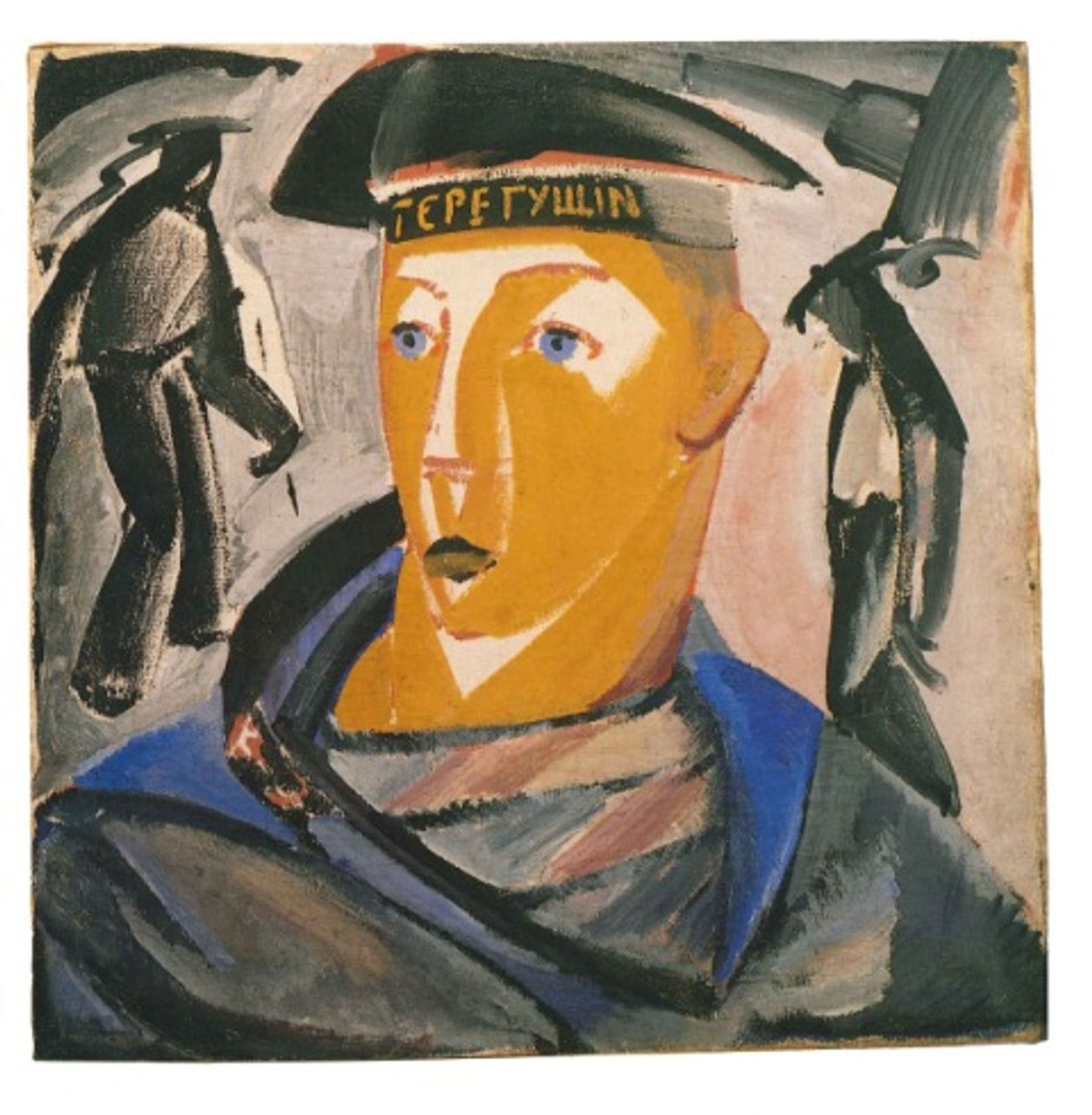 Vladimir Tatlin, Seaman (Self Portrait), 1911, Copyright: State Russian Museum, St.Petersburg
Vladimir Tatlin, Seaman (Self Portrait), 1911, Copyright: State Russian Museum, St.Petersburg From painting to “counter-relief”
Tatlin, born in Kharkov, the son of a railway engineer (father) and a poet (mother), went to sea as a young man. Until 1913 he produced only paintings and drawings, the starting point of his entire oeuvre. A self-portrait from 1911, of the artist as a sailor, greets the visitor at the exhibition. Tatlin seems to be looking into the future openly, courageously and optimistically, if also in a slightly dreamy manner.
The self-portrait is surrounded by three wonderful nude portraits from 1912-13 that document his closeness to Cézanne and cubism, and his subsequent evolution toward abstraction, while hinting at the same time his deep roots in the traditions of Russian popular art and icon painting.
In one corner, one can see the “corner counter-relief” (1914) from the Russian State Museum in St. Petersburg. It is one of the very few remaining examples of the “counter-relief”, an art form created by Tatlin after visiting Pablo Picasso, whom he admired greatly, in Paris. It constitutes a challenge to previous forms of painting and sculpture, and attains its effect solely through its organisation of diverse materials in space. During the Stalin era almost all these works were either lost or destroyed.
With these constructions Tatlin freed himself from painting and its depicted content. He began to assemble these structures from everyday objects and bits and pieces, mounting them on freely suspended ropes or wires. They combine materials such as wood, glass, leather, metal, gypsum, cardboard or pieces of wallpaper. The suspended ropes, recalling boat riggings or stringed instruments, seem to defy gravity.
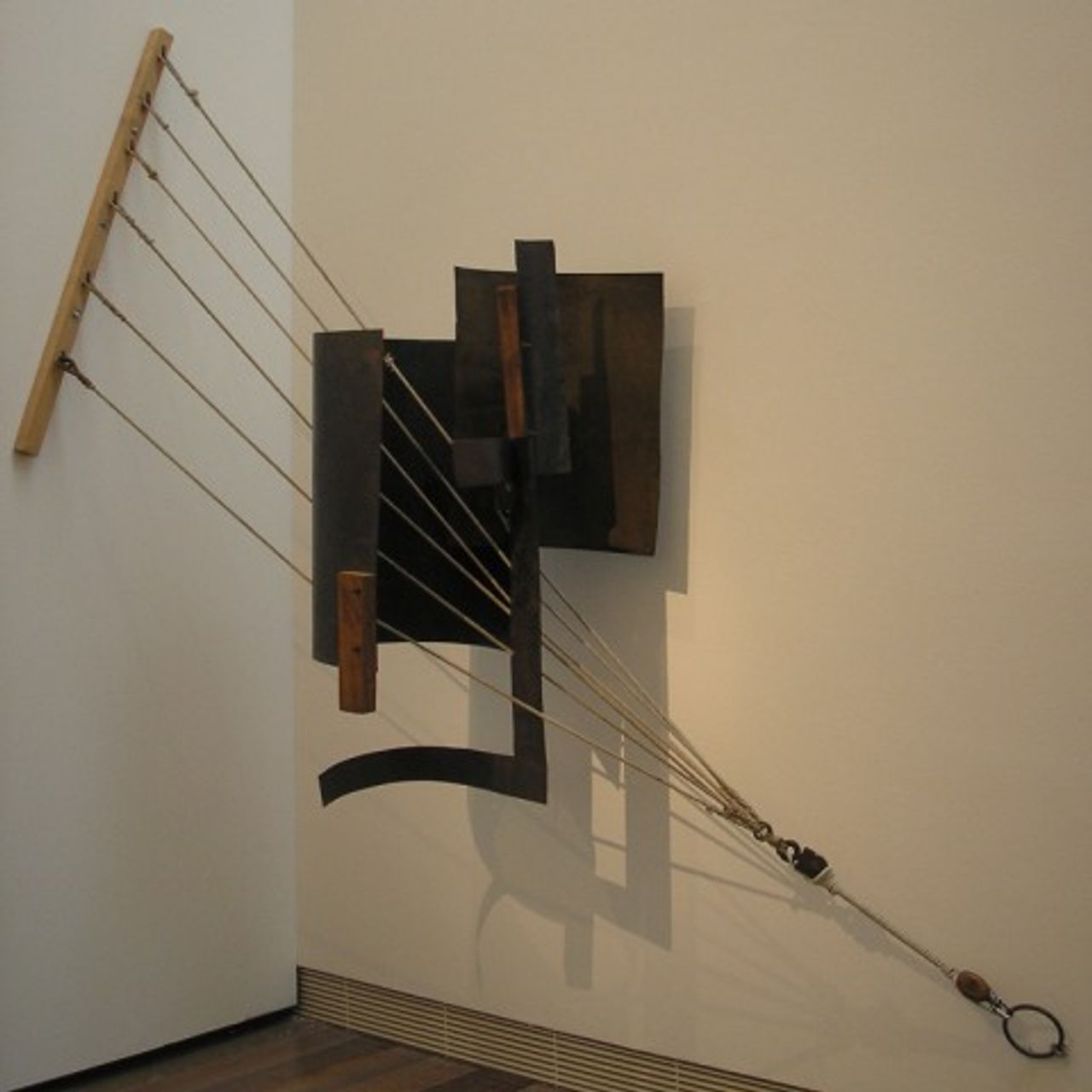 Vladimir Tatlin, Corner Counter-Relief, 1914, State Russian Museum, St. Petersburg, photo WSWS
Vladimir Tatlin, Corner Counter-Relief, 1914, State Russian Museum, St. Petersburg, photo WSWSWhen the counter-reliefs were first exhibited, visitors were allowed to touch them. Tatlin insisted: “Let us place the eye under the control of touch”. His point was to give the materials a role of their own beyond merely their visual reception.
Tatlin earned the money to make his visit to Picasso in Paris by performing as a “blind” bandura [stringed folk instrument, resembling a lute or zither] player in Berlin. There is no doubt that Picasso had a great influence on Tatlin’s turn to abstraction, but the latter surpassed his idol with his material assemblies that not only brought together pieces of wood, metal or cardboard, but organised them in free space and removed them from their original contexts.
Tatlin’s Tower
The two reconstructions of “Tatlin’s Tower” (The Monument to the Third International) are the real heart of the exhibition. They reflect Tatlin’s boundless determination to put his creative work at the service of the October Revolution of 1917 and its extension to the entire world. Tatlin later said he was “the first artist who went to work for Soviet power” (which may or may not have been an exaggeration).
From that point on, he regarded the building of a new world to also be the task of art. In 1953, near the end of his life, Tatlin wrote in an autobiographical fragment: “1917. To accept or not to accept the October Revolution, that wasn’t a question for me. In an organic fashion I joined active, creative, social and pedagogical life”. (Exhibition catalogue, 94)
At the end of 1918 he was appointed to a position at the Free State Artistic Workshops (SVOMAS) in Petrograd. During the following years he took on further assignments to help train a new generation of artists. He focussed on the scientific exploration of fabrics and forms that would be just as decisive for art as for the development of technology in industry. In the workshops he cooperated in an interdisciplinary fashion with a collective of experts on architecture, handicrafts, sculpture and engineering.
Tatlin realized that the revolution not only imposed new duties and responsibilities on art, but that the new art must be an essential and necessary part of the revolutionary development. “Not the new, not the old, but the necessary”, the artists’ group New Tendencies in Art in 1923 proclaimed this as its motto for an exhibition in Petrograd in which they opposed the rejection of all the achievements of bourgeois culture, as well as any absolute glorification of all that was modern.
Tatlin’s tower had been conceived as a helical [spiral] tapering metal construction whose axis was to run parallel to the earth’s axis and which was meant to reach a height of 400 metres (higher than the Eiffel Tower). Inside it, according to the model, three or four rooms surrounded by glass and shaped as cubicles, pyramids, cylinders or hemispheres were to rotate at different speeds.
Inside those rooms the different organs of a future world socialist workers republic were to hold their meetings. From the tower beams of light would be projected on the sky and a radio station would continuously broadcast in every language. The rotations of the various elements of this structure were to quite literally represent “revolution”.
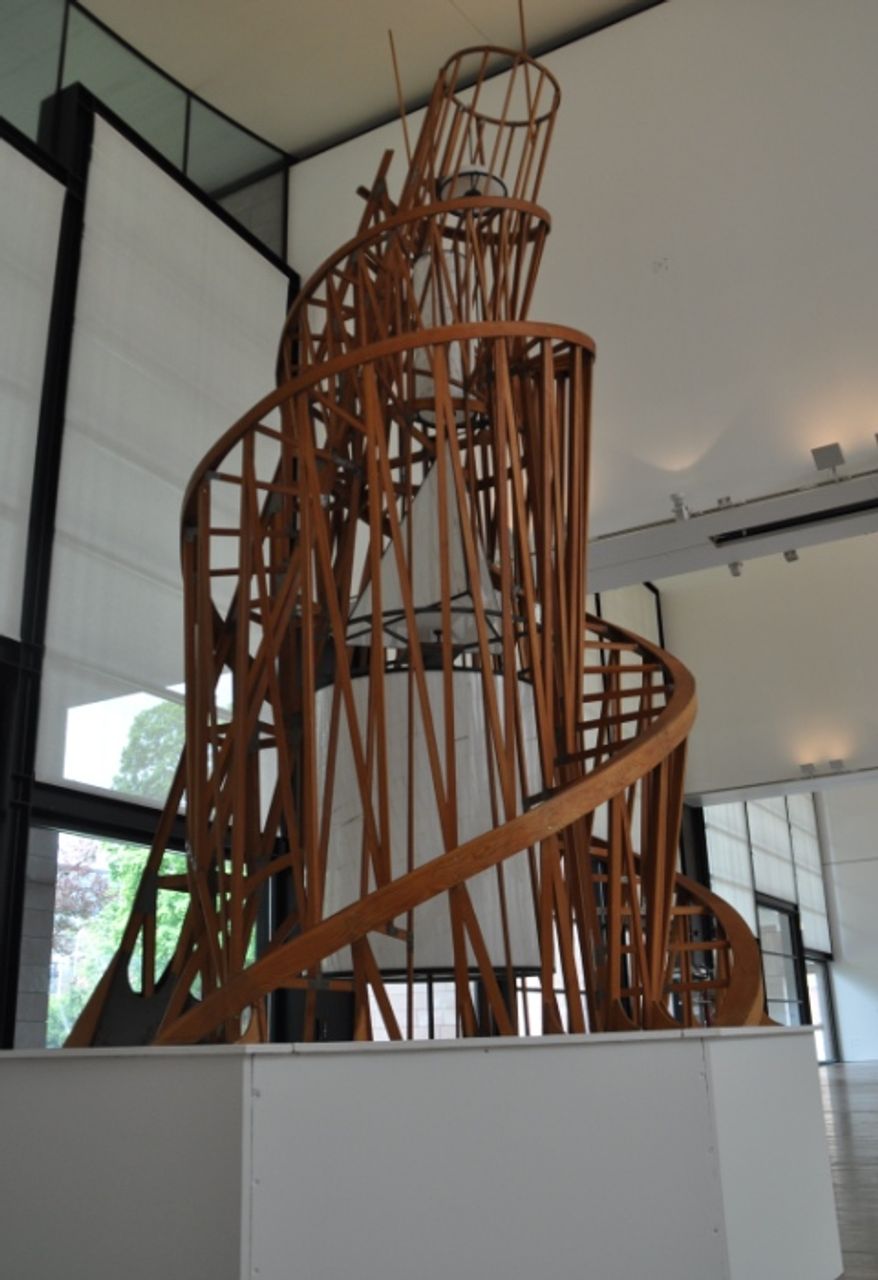 Vladimir Tatlin, Model of the Monument to the Third International [1919-1920], reconstruction of the studio Longépé, 1979, Centre Georges Pompidou, Paris, photo WSWS
Vladimir Tatlin, Model of the Monument to the Third International [1919-1920], reconstruction of the studio Longépé, 1979, Centre Georges Pompidou, Paris, photo WSWSThis monument to the Third International never materialized—hampered not only by the civil war, but also the terrible shortage of materials and the legacy of Russian economic backwardness. Even so, a glimpse at the plans and models on view at the Tinguely exhibition give a sense of the elation and optimism that prevailed among artists dedicated to Soviet power after the revolution. Aside from the brilliance of the tower’s design, those sentiments no doubt help explain the enduring appeal of Tatlin’s tower and its ability to inspire so many artists to reconstruct the artist’s lost or destroyed models.
With his tower Tatlin sought not only to create an impressive building with a great aesthetic and social impact, but at the same time usher in a new type of monument: not another memorial simply dedicated to the dead and what was past, no sculptured heads of great men, but rather a monument expressing the hopes in a new form of life and the great historic moment of the revolution. The tower’s first name was: “Monument to the October Revolution of 1917”.
Along with the reconstructed tower models, the Basel exhibition features two reconstructions of the Letatlin, Tatlin’s delicately conceived flight apparatus. He was trying, in the late 1920s and early 1930s, to create an apparatus with bird’s wings that would enable an individual to ascend into the sky on a sort of aerial bicycle, relying solely on his or her muscular strength.
People of the future, the artist reasoned, should not only have the most technically developed airplanes at their disposal, but also be able to fly themselves, due to the perfected form of a flight apparatus. “I came to the conclusion that the aesthetic forms that nature produces are also the most economical”, Tatlin declared (Exhibition catalogue, 96). One only had to find the ideal form.
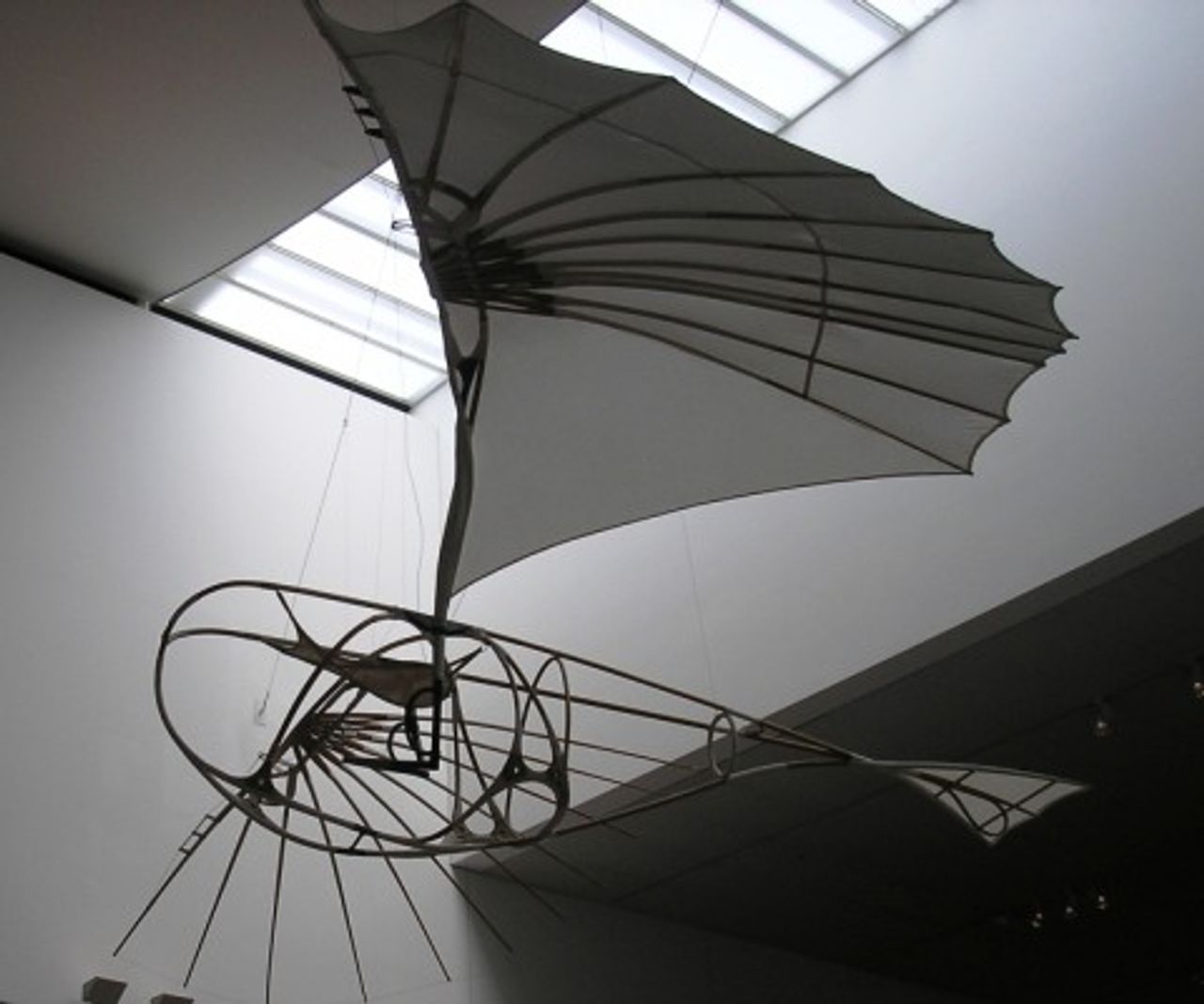 Vladimir Tatlin, Letatlin [1929-32], reconstruction of Jürgen Steger, 1991, Zeppelin Museum Friedrichshafen, photo WSWS
Vladimir Tatlin, Letatlin [1929-32], reconstruction of Jürgen Steger, 1991, Zeppelin Museum Friedrichshafen, photo WSWSThe Letatlin, of which only one version has been preserved, was exhibited in the Italian hall of the State Museum of Fine Arts in Moscow (nowadays the Pushkin Museum) next to sculptures by Verrocchio and Donatello and immediately next to a copy of Michelangelo’s David. It pointed to the Renaissance idea of a human being as a perfectible, universally developed creature.
Tatlin’s main concern was not merely the construction techniques involved in such a machine, as a 1934 newspaper article that includes a photo-collage seems to assume. The article can be seen in the documentary section of the exhibition where the Letatlin is presented as an example of “The Inventor—front-line fighter for the most up-to-date defense technique”, which in fact probably contradicts its original aim. However, the model was also shown at a show of gliders in 1933 in Moscow.
There are also some highly interesting reconstructions of Tatlin’s works to be found in the smaller rooms of the exhibition. There are only photographs left of most of the sculptures, and it has been difficult to recreate precisely the original pieces of art. One counter-relief was rebuilt twice in order to give some sense of the original.
Not just a lifeless copy, but demanding its own artistic effort and imagination, each reproduction has quite a unique character. The most important reconstructions were made in London by Martyn Chalk, and by Dimitri Dimakov, Elena Lapshina and Igor Fedotov in Penza, a Russian town about 400 miles southeast of Moscow. Penza was the place where Tatlin concluded his artistic training.
Theatrical work
Among the works for the theatre that almost make up an exhibition of their own, are recurring references to Richard Wagner’s The Flying Dutchman (not surprising, given Tatlin’s extensive experience as a sailor), including various stage designs, costumes for helmsmen and sailors. Amongst other pieces, there is a draft stage design with wonderful shades of blue that remind one of the sea, of night and music. These works were done by the artist without any commission.
The colourful and down-to-earth drafts for stage design and costumes for the popular play Tsar Maksemyan [Maximilian] and His Disobedient Son Adolfa (1911) testify to Tatlin’s close bonds with his native country. In their colour and forms of expression they recall Matisse.
There are photos, drawings, stage design models and costumes from the staging of Zangezi, a play by the futurist poet Velimir Khlebnikov, staged in 1923. Tatlin, a close friend of Khlebnikov’s, not only directed the play, but also played the leading role of the prophet Zangezi. The “dialogue” is dense and difficult, containing apparently many illogical and absurd juxtapositions, alliterations and invented words. Sections of the play can be heard at the exhibition.
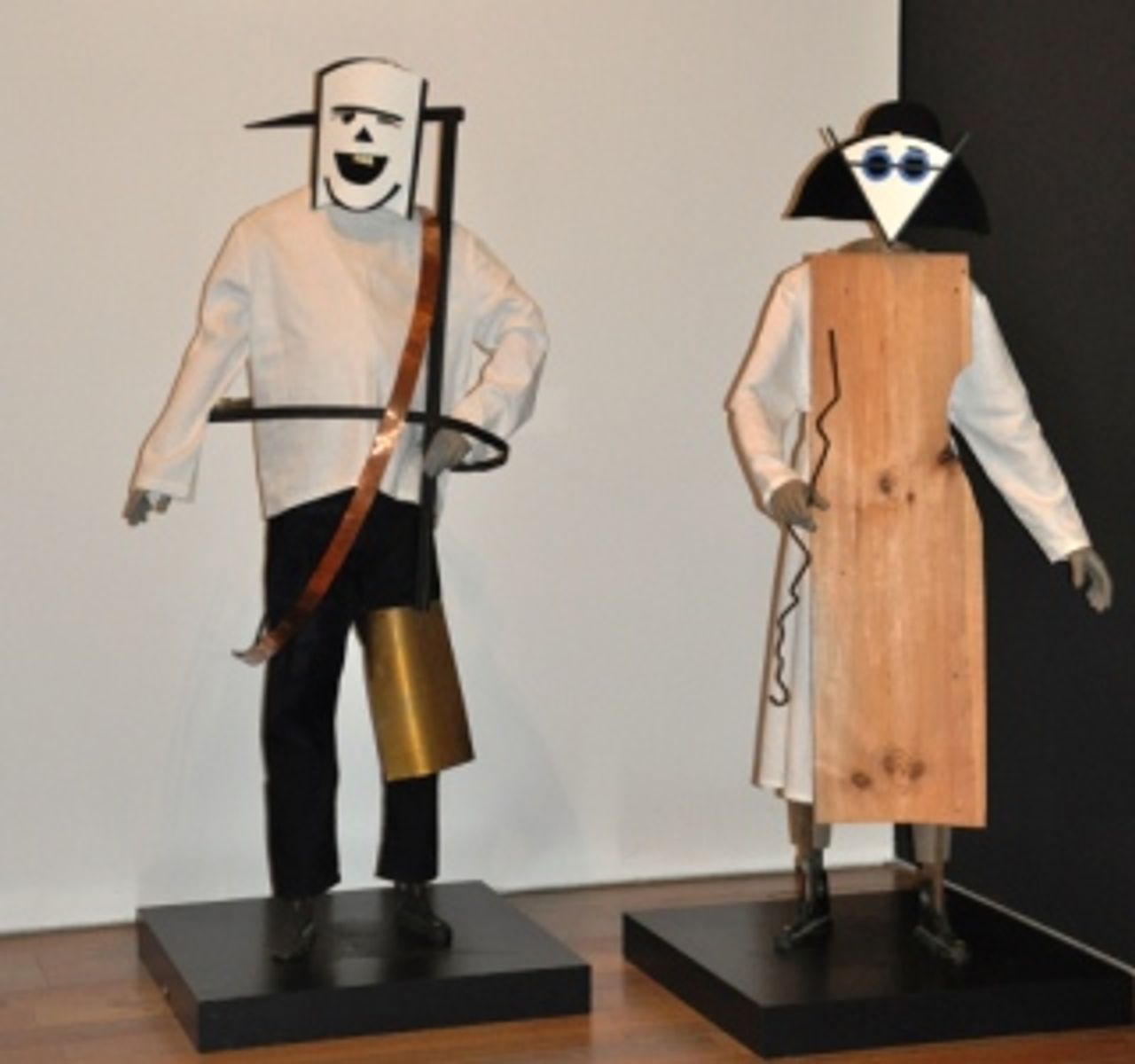 Vladimir Tatlin, Velimir Khlebnikov's costume designs for
Vladimir Tatlin, Velimir Khlebnikov's costume designs for "Zangezi" [1923], reconstruction of Dmitri and Irina
Dimakow Malsagowa, privately owned.
Left: "Laughter," right, "grief", photo WSWS
Tatlin remained attached to the theatre, an art form that involves the cooperation of many people. This work gave him a chance to stay artistically active during the years of reaction from the mid-1930s onward. It also enabled him to support himself modestly without having to renounce his original ideas and succumb to the dictates of the Stalinist cultural bureaucracy.
The exhibition at the Museum Tinguely in Basel attracted a large crowd on its opening day. The media response has been positive. A day after the opening, the Basellandschaftliche Zeitung wrote: “The exhibition is the highlight of this year’s art summer in Switzerland. ... It will be long before you get another chance of seeing Tatlin presented in such a comprehensive and outstanding way”.
This assessment is no exaggeration. The exhibition is not only of European but also of international significance. In the wake of the current Building the Revolution exhibition in the Martin-Gropius-Bau in Berlin, it is the second major European exhibition to deal with Soviet art after the 1917 Revolution. Tatlin’s work brings to life the concepts, visions and new forms of that period.
This turn toward a “new art for a new world”, toward art in post-revolutionary Russia is not accidental. As was the case a century ago, humanity is entering a new period of social upheaval, major class struggles and political transformations. For several decades, the October Revolution and its associated revolution in art and culture have been considered dead and buried in many circles. Their re-emergence has an objective significance.
To be continued
Explanatory notes:
[1] “Tatlin uses the term ‘Counter-Relief’, meaning ‘a new form that had successively emerged from the relief but disclaimed it, hence counter-relief’”. (Exhibition catalogue, 100)
[2] Letatlin: a neologism and play on words, combining the artist’s name and the Russian word letat--to fly.
The authors also recommend:
Bolshevism and the avant-garde artists (1993)
[17 February 2010]
